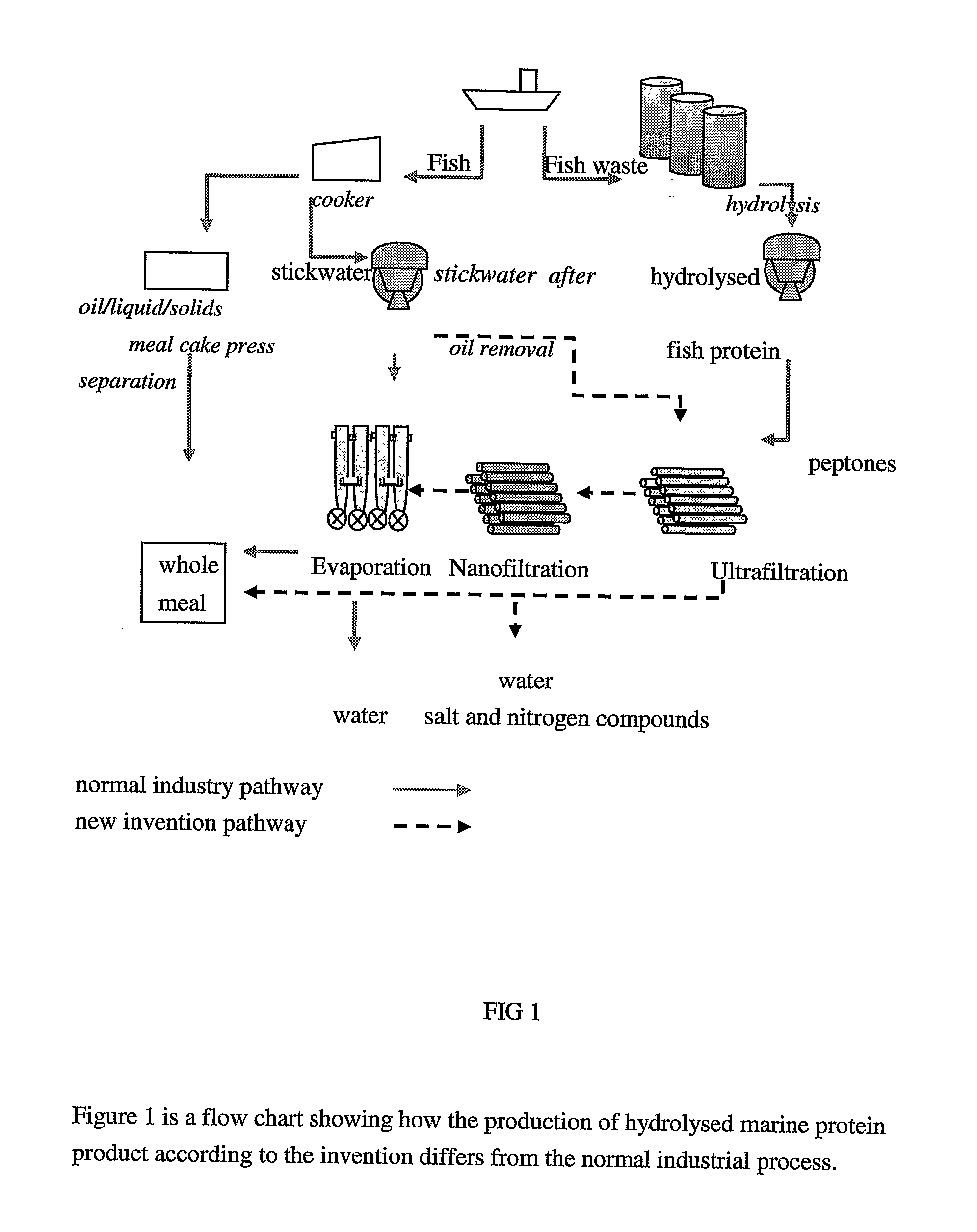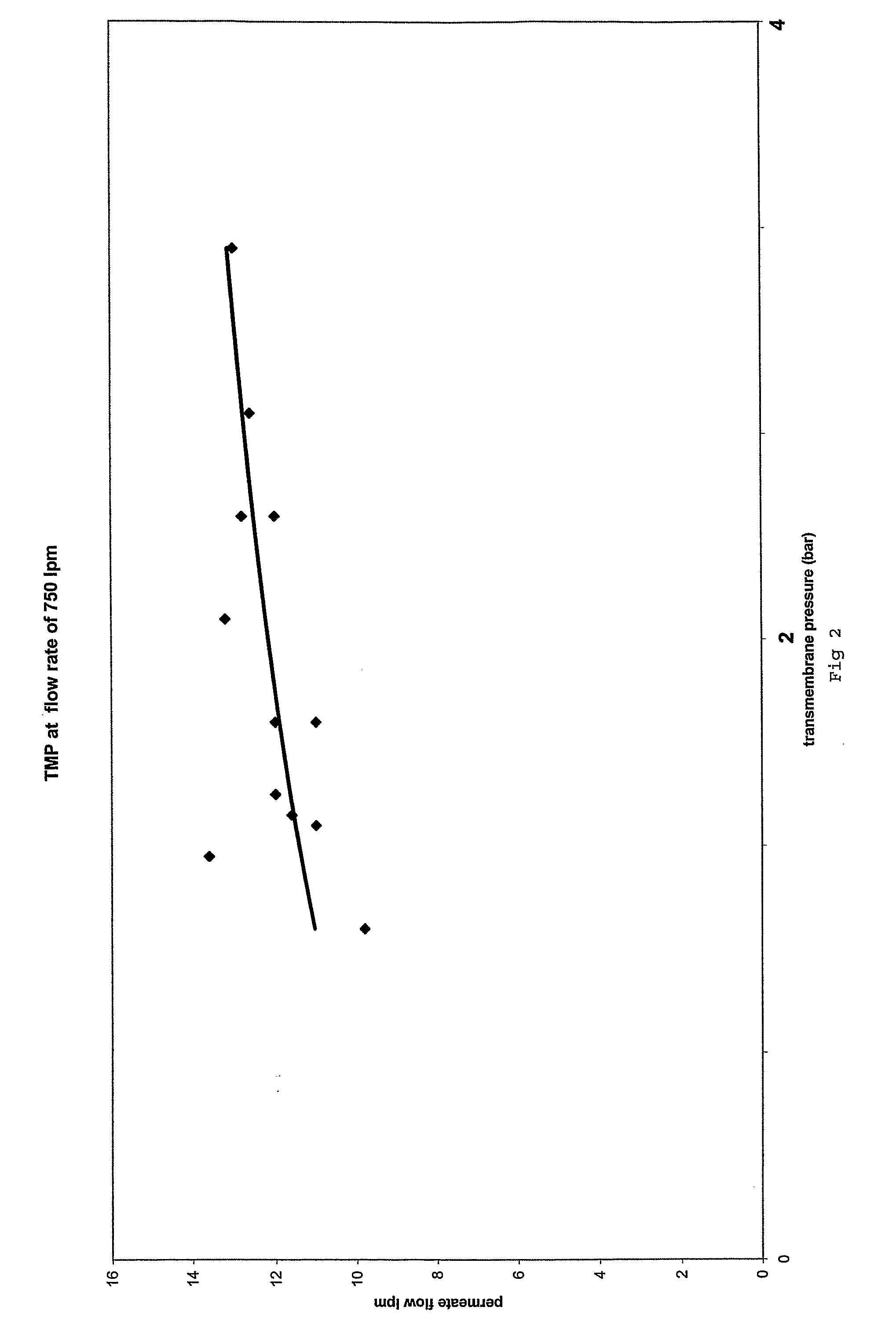Hydrolysed Marine Protein Product, Process for the Production Thereof, and Application
a technology of marine protein and hydrolysed marine, applied in the direction of protein composition from waste materials, instruments, food shaping, etc., can solve the problems of logistical and environmental challenges, affecting the health of animals, and difficult to use large amounts of traditional fish by-products for domesticated farm animals, so as to enhance feed performance, enhance feed performance, and enhance the effect of feeding performan
- Summary
- Abstract
- Description
- Claims
- Application Information
AI Technical Summary
Benefits of technology
Problems solved by technology
Method used
Image
Examples
embodiments
[0084] The following examples further describe the invention and are intended not to limit the scope of the invention.
[0085] Materials and Methods
[0086] Ultrafiltration (UF) and Nanofiltration (NF) Process
[0087] The starting material of the hydrolysed marine protein product according to the invention can be any marine protein source such as fish, by-products of fish, fish silage and stickwater from fish meal processing. To illustrate the process stickwater and silage is used.
[0088] Stickwater at 80° C. contains oil, proteins, salts amines and water. The first step is to remove oil by any suitable separation technique in the art. Following separation of the oil the UF is used to separate the proteins and remaining oils left after separation from the hydrolysed proteins amines and salts. The retentate, i.e. the concentrated proteins and oils contain the gelatinous proteins that can then be returned to the meal to improve binding.
[0089] The permeate, i.e. the liquid that goes thro...
PUM
| Property | Measurement | Unit |
|---|---|---|
| Temperature | aaaaa | aaaaa |
| Fraction | aaaaa | aaaaa |
| Volume | aaaaa | aaaaa |
Abstract
Description
Claims
Application Information
 Login to View More
Login to View More - R&D
- Intellectual Property
- Life Sciences
- Materials
- Tech Scout
- Unparalleled Data Quality
- Higher Quality Content
- 60% Fewer Hallucinations
Browse by: Latest US Patents, China's latest patents, Technical Efficacy Thesaurus, Application Domain, Technology Topic, Popular Technical Reports.
© 2025 PatSnap. All rights reserved.Legal|Privacy policy|Modern Slavery Act Transparency Statement|Sitemap|About US| Contact US: help@patsnap.com



